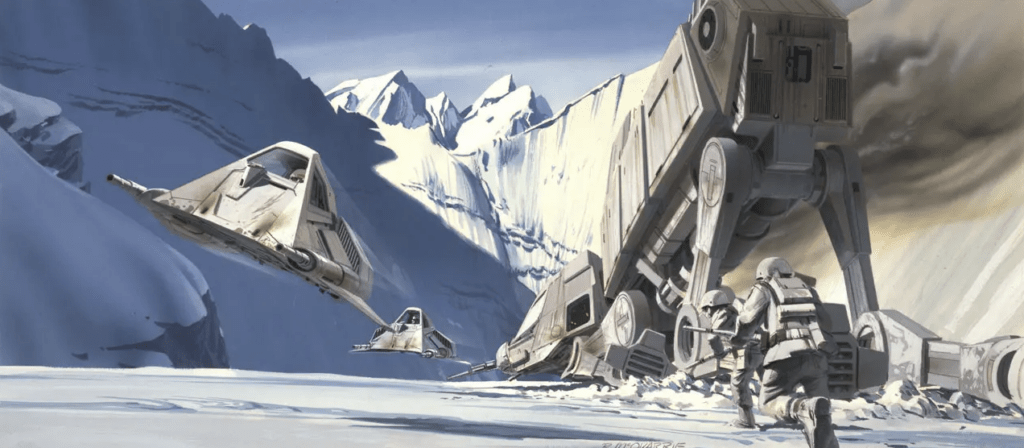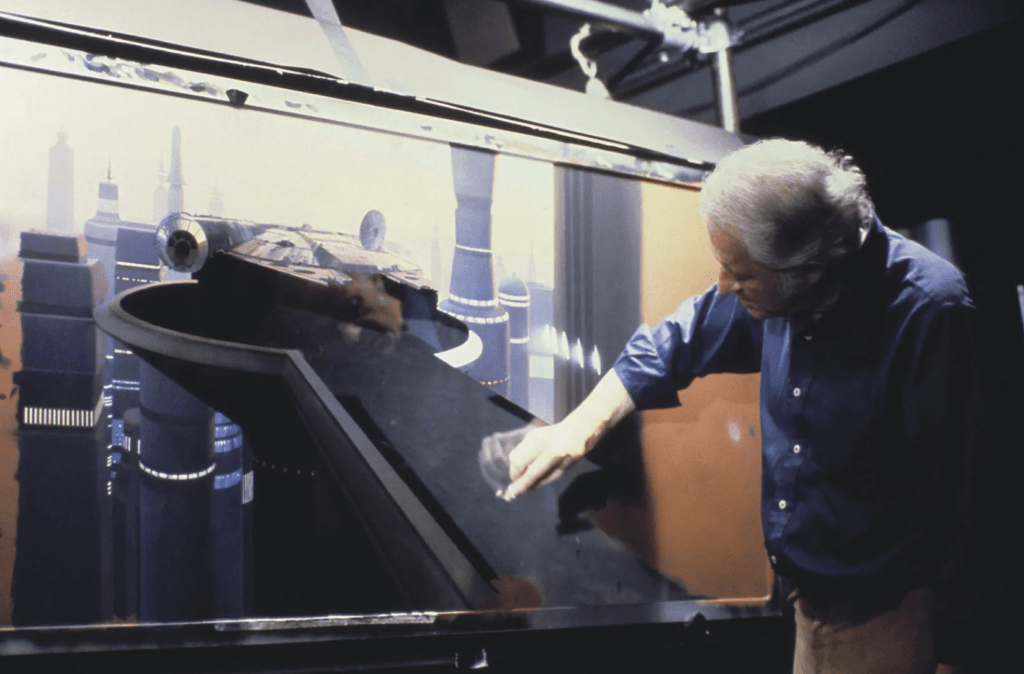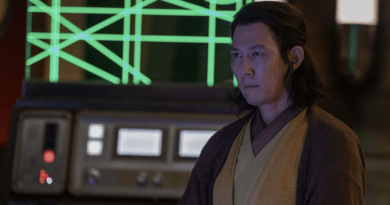
McQuarrie’s Impact on Star Wars Legacy: Designing Star Wars Icons
To many fans, Ralph McQuarrie is synonymous with the visual identity of Star Wars. Hired in
1975, McQuarrie faced the monumental task of bringing George Lucas’s imaginative worlds,
characters, and vehicles to life. His artwork did more than just convince 20th Century Fox to
put up the money for the film; it created a visual look that would engage audiences for
generations to come.
Creating Iconic Characters
McQuarre’s creation of novel characters, weapons, robots, and whatnot sets him apart from
contemporary artists. He has pioneered future works multiplying Star Wars worth.

Darth Vader
One of McQuarrie’s famous contributions was to include the design of Darth Vader. When
Vader was first created, McQuarrie had him as a grim, Sith lord attire in only a simple robe.
He also had him in a breathing apparatus and helmet, somewhat like a samurai, giving him
an ominous, otherworldly aura. This concept design emulated the need for Vader to survive
in space, an aesthetic and functional element that would play an important in the narrative of
his character.

Lightsabers
It is through Ralph McQuarrie’s concept art that lightsabers were defined. He had envisioned
the lightsaber as something much more refined—a futuristic, sleek sword still carrying an air
of mysticism from ancient times with a technological feel. His designs emphasized slim hilts
with a minimum of features so that glowing blades stood out as the focus.
It is this contrast of simplicity against a notion of the futuristic that lent lightsabers much of
their visual appeal, as well as worked metaphorically to show the ties of both the Jedi and
the Sith to a more civilized, yet technologically advanced, time. McQuarrie’s vision set
lightsabers on the road to immortality, and they now seem indelibly connected to this
franchise’s visual and narrative identity.

C-3PO and R2-D2
The designs that McQuarrie did for R2-D2 and C-3PO show his melding of the extraordinary
into the familiar. Contrasted between the small, functional R2-D2 and the sleek, human-like
C-3PO are inspirations from Fritz Lang’s “Metropolis.” Early drawings that McQuarrie had
done created a visual dynamic that accentuated each character’s differing personalities and
plot responsibilities and went on to become legendary within the franchise.

Snow Troopers
The influence of Ralph McQuarrie on Star Wars is imaginatively depicted through his design
for the Snow troopers in “The Empire Strikes Back.” Detailed to create a stormtrooper
adaptation for the Icy planet of Hoth, McQuarrie effectively blended functionality with the
distinct look of the series and created a design that donned heavy, padded armor with a
particularly recognizable faceplate and visor.
His designs were practical things like insulated suits and jackets that ballooned out behind
them to establish not only the scariness of the cold but also the scariness of their demeanor.
In so doing, he did not only succeed in enhancing the overall visual narrative for the film but
also became an example of unmistakable talent to create an immersive, believable character
a skill that serves as a keystone for Star Wars to this day.

New X Wings
It’s easy to feel the influence of Ralph McQuarrie within the new designs for the X-Wings in
the sequel trilogy of Star Wars. His initial concept for the X-Wing fighters depicted an
aerodynamic, smooth design that harmoniously merged functionality with a touch of futurism.
The new X-Wing designs maintained the classic split-wing configuration and streamlined
form of McQuarrie’s vision but added modern updates and advanced detailing. This mix of
the classic and modern-day elements of design gives the X-Wing seamless evolution,
staying true to McQuarrie’s past while continuing to embody a spirit of resilience and
innovation that the Rebel Alliance is made of.

Designing the Galaxy
The concept of Galaxy has ensnared fans from the beginning. Not to mention how well
Ralph understood George Lucas imagination and helped create it into a masterful silver
screen work.

Millennium Falcon and the Tattooine
McGuire’s work didn’t stop at his characters but continued through the actual environments
in which they lived. His depictions of the bustling Mos Eisley Cantina and the desolate
expanses of Tatooine firmly planted the otherworldly elements of the film in reality.
Based on McQuarrie’s designs, so many Millennium Falcons with their uniquely saucer-
shaped form and intricately detailed interiors turn into a character on their own accord,
fleshing out the tough and daredevil qualities of the Rebel Alliance.

Star Destroyers and the Death Star
Known for influencing the aesthetic of the Empire, McQuarrie’s mastery in articulating
strength and threat through architecture is stark in the clean, angular shape of Star
Destroyers and the monolithic presence of the Death Star. Details attended to by him
ensured that these designs were not only aesthetically pleasing but also effective for plot
needs that maximize drama and scope in a narrative.

A Legacy of Influence
His conceptual work (matte paintings, posters, and early designs for C-3PO and Darth
Vader) helped extended universe ventures, animated television shows, and motion pictures.
One recent example of just how much this brand still relies on McQuarrie’s work is the “Star
Wars Rebels” series, which made extensive use of his unutilized concepts. The original
trilogy was by no means the end of McQuarrie’s output.

The Design Process
Ralph McQuarrie created magic with his art supplies. It is one thing to hear what the
audience wants. Ralph did a fantastic job appeasing and satisfying the demand from the
professionals and the Star Wars audience alike.
Initial Sketches and Iteration
The design process for McQuarrie would begin only with pencil sketches, to evoke the spirit
of Lucas’s descriptions. After that, preliminary drawings would be refined through several
iterations of feedback from Lucas and other key creatives. In this fashion, such a
collaborative process was important in aligning the visual style to the narrative vision and
bringing coherence to the diverse elements that go into the making of a film.

Painting the Vision
Once a design was approved, McQuarrie would prepare detailed paintings, adding color and
texture to bring the concept to life. These paintings would stand as visual blueprints for the
film’s production team in constructing the sets, costumes, and special effects. In doing so,
McQuarrie’s skill at seeing his complex ideas as concretely existent helped to fill in a gap
between concept and reality.

Conclusion: An Indelible Mark
To Ralph McQuarrie, his artistic vision was not some component that made Star Wars
special; it was the foundation of its success. The ability to translate abstract ideas into
compelling visual narratives created a universe at once vast and intricately detailed. His
legacy lives on in every corner of the Star Wars galaxy as a shining example of the power of
the imagination and a testament to the lasting influence of visionary art.



